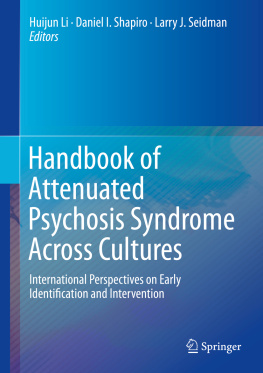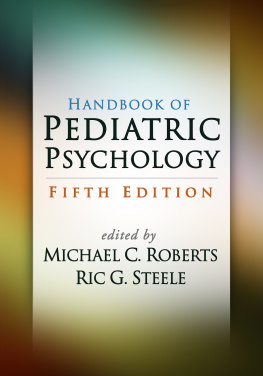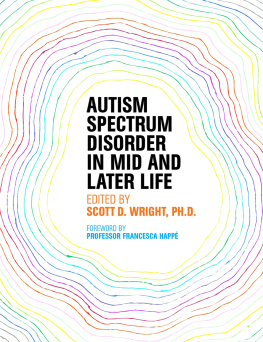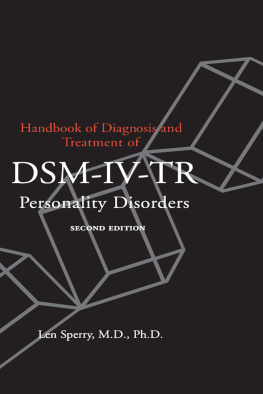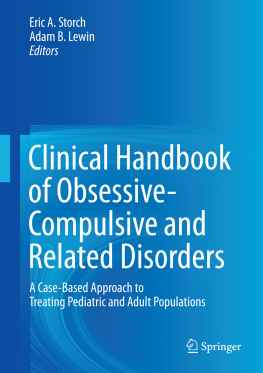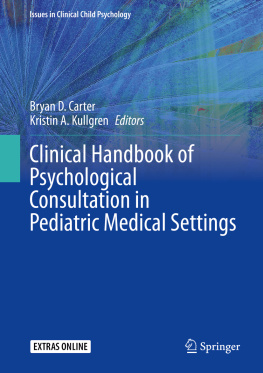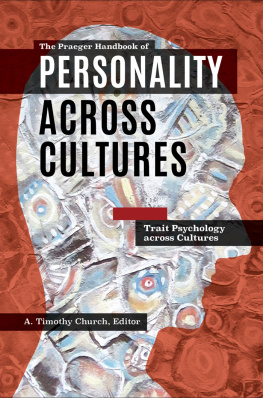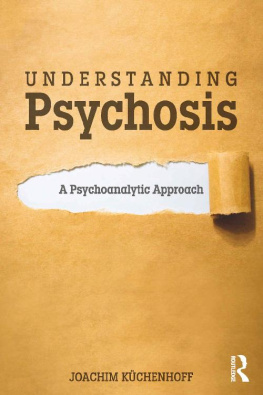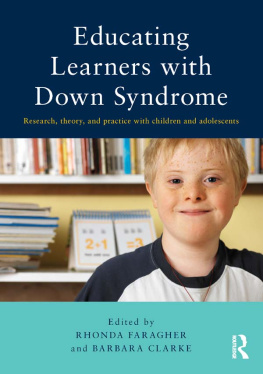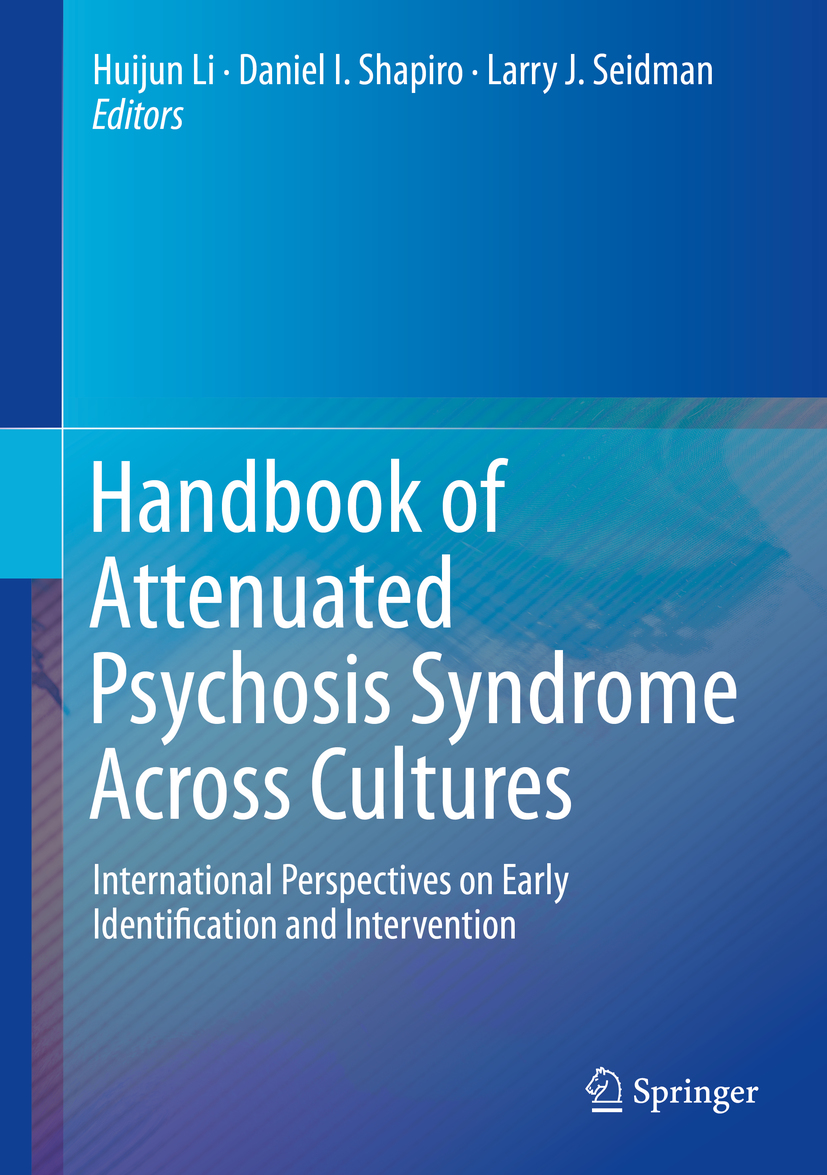Editors
Huijun Li
Department of Psychology College of Social Sciences, Arts and Humanities, Florida A&M University, Tallahassee, FL, USA
Daniel I. Shapiro
Department of Psychiatry Early Psychosis Programs, University of California-Davis, Sacramento, CA, USA
Beth Israel Deaconess Medical Center, Harvard Medical School, Boston, MA, USA
Larry J. Seidman
Beth Israel Deaconess Medical Center, Harvard Medical School, Boston, MA, USA
ISBN 978-3-030-17335-7 e-ISBN 978-3-030-17336-4
https://doi.org/10.1007/978-3-030-17336-4
Springer Nature Switzerland AG 2019
This work is subject to copyright. All rights are reserved by the Publisher, whether the whole or part of the material is concerned, specifically the rights of translation, reprinting, reuse of illustrations, recitation, broadcasting, reproduction on microfilms or in any other physical way, and transmission or information storage and retrieval, electronic adaptation, computer software, or by similar or dissimilar methodology now known or hereafter developed.
The use of general descriptive names, registered names, trademarks, service marks, etc. in this publication does not imply, even in the absence of a specific statement, that such names are exempt from the relevant protective laws and regulations and therefore free for general use.
The publisher, the authors, and the editors are safe to assume that the advice and information in this book are believed to be true and accurate at the date of publication. Neither the publisher nor the authors or the editors give a warranty, express or implied, with respect to the material contained herein or for any errors or omissions that may have been made. The publisher remains neutral with regard to jurisdictional claims in published maps and institutional affiliations.
This Springer imprint is published by the registered company Springer Nature Switzerland AG
The registered company address is: Gewerbestrasse 11, 6330 Cham, Switzerland
Dedication
Dr. Larry Seidman unexpectedly passed away in September 2017, when this book was roughly two thirds complete. This volume is dedicated in loving memory to Larry, as well as to his wife, children, and grandchildren, and to the extended family of people spread around the world who have been touched by his kindness, welcoming generativity, intellectual curiosity, and sage foresight. The book is a tribute to Larrys tireless efforts to better understand and improve the lives of all those touched by psychosis, ADHD, and other conditions affecting neurocognition. But even more broadly, and fitting as a last book, it is a homage to a man who at his core valued people most and relished the opportunity to experience something newsome new ideological horizon or perspective to be pondered or hashed out with others, some shared food or event or sight enjoyable for its novelty and pleasure, or some new tradition or culture experienced together with somebody from somewhere else. He was a man who valued diversity of thought and experience and, among all the things he was good at, had an uncanny sense of how things fit into their larger contexts and a vision for how this might guide the future of his field. Dr. Seidman has been mentor, friend, or colleague to both coeditors and many of the authors who contributed to this book. True to his nature, he was proud of this project and of the collaborations across all conceivable geographical, political, and cultural lines that it represents. This was not as new an endeavor to Larry as it is to our field. In more ways than one, this book would not exist without his influence. And in more ways than one, it is a tribute to him.
Daniel I. Shapiro and Huijun Li
October 2018
Foreword
Prevention and early intervention in psychotic disorders was regarded for many decades as a pipe dream. Those who held that dream were accused by their senior colleagues of the cardinal sin of offering false hope and indulging in rescue fantasies. How much the world has changed over the past three decades! Schizophrenia and psychotic disorders, imbued with pessimism and the soft bigotry of low expectations, seemed to be the least promising arena for the development of a preventively oriented psychiatry, but a global wave of dynamic translational research has transformed our field. We have finally realized that every other branch of medicine values the power of hope, and to strip hope away from patients and families at the onset of any treatable illness, however potentially disabling, deprives clinicians of one of their most powerful therapeutic tools. However, hope is not enough. We have also learned from cancer and other major noncommunicable diseases that if we diagnose early, treat intensively, and guarantee a secure tenure of expert care for as long as needed, especially in the early years post diagnosis, then outcomes can be dramatically improved, even with existing treatments. The evidence base for psychosis confirms the same is true for these disorders, provided that once we have got people well, we endeavor to keep them well. This approach however is still in mental health care, more honored in the breach than the observance. Despite the progress we have made, only a minority of patients worldwide benefit from implementation of this knowledge. We can do so much more for our patients, and the early intervention paradigm powered by implementation science and advocacy is the key.
The origins of what in North America is now increasingly referred to as the Attenuated Psychosis Syndrome goes back a long way. Kraepelin and Bleuler both described how dementia praecox and schizophrenia all too often developed imperceptibly and gradually with subtle changes and precursor signs and symptoms which eventually evolved into more florid and acute phases of frank psychosis. Harry Stack Sullivan in the 1920s described carefully the onset of schizophrenia and imagined the day when interventions might forestall the full expression of the illness. More recently, Ainsley Meares and Heinz Hafner described the prodromal stage of illness, and an operational definition of this prodromal stage was even included in the DSM III-R . Ironically, it was dropped from DSM IV because it was regarded as non-specific and unreliable. Yet, non-specificity is an essential feature of the concept of prodrome as adapted from infectious disease. Inspired by the knowledge that over 70% of first episode cases manifested a prodromal stage, our early psychosis research group, from 1991, initially Henry Jackson and I, and, then from 1993, Alison Yung, decided to study this stage of illness, initially retrospectively and then prospectively, using an operational definition that combined known risk factors, such as family history, functional decline, and attenuated or subthreshold symptoms as warning signs of fully fledged and sustained psychotic disorder. This later became known as indicated prevention. We established a satellite (PACE) clinic of the recently established EPPIC program in Melbourne and studied a prospective cohort of patients who manifested what we termed an at-risk mental state. We observed a 40% rate of progression to first episode psychosis within 1 year, despite providing needs-based clinical care to these patients. This led us to coin the term ultrahigh risk state to underline the huge elevation of risk that was present. In the USA, Barbara Cornblatt amended this term to clinical high-risk state to contrast the approach with the genetic high-risk paradigm that had been pursued to that point. The at-risk or ultrahigh risk approach was an example of the close-in research strategy that studied risk factors, including subthreshold symptoms, close to onset of disorder. It was able to enrich the sample for risk and collapse follow-up periods, offering huge advantages.

